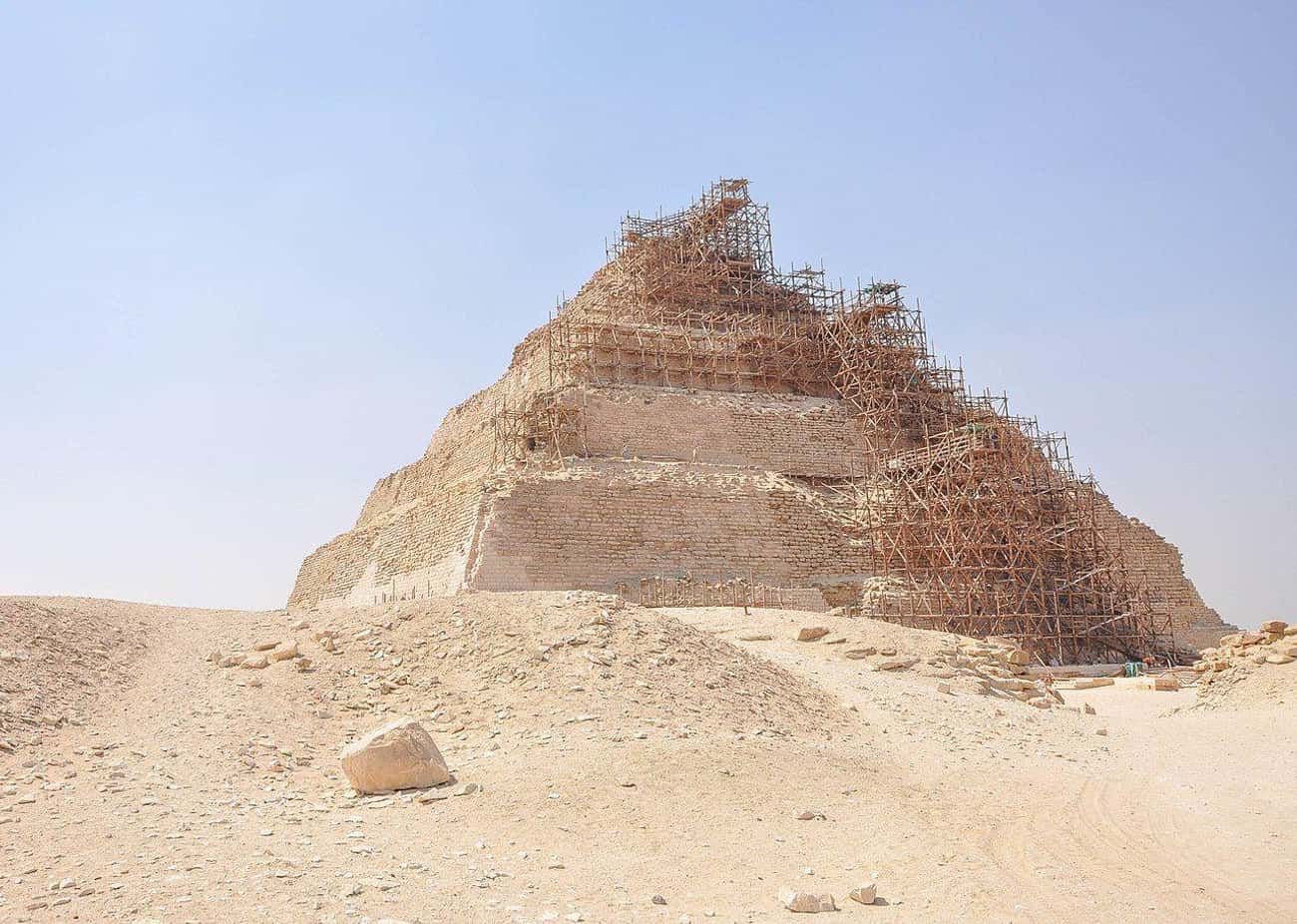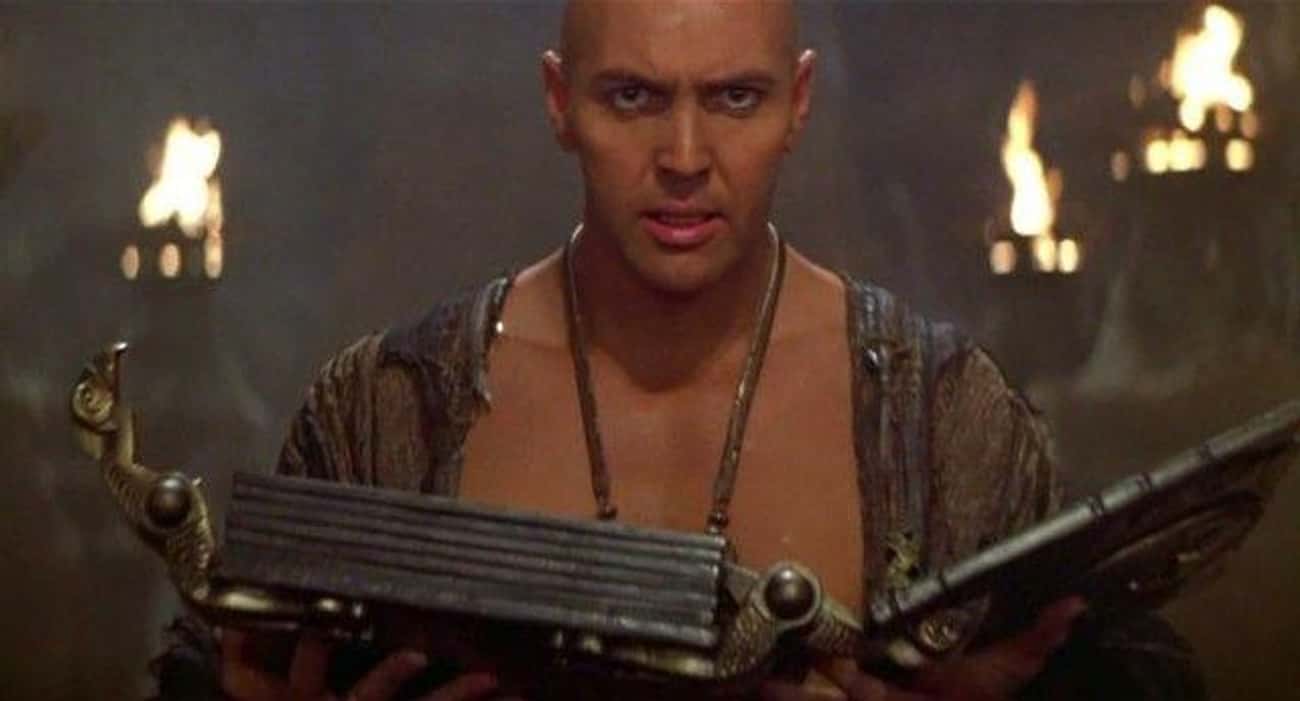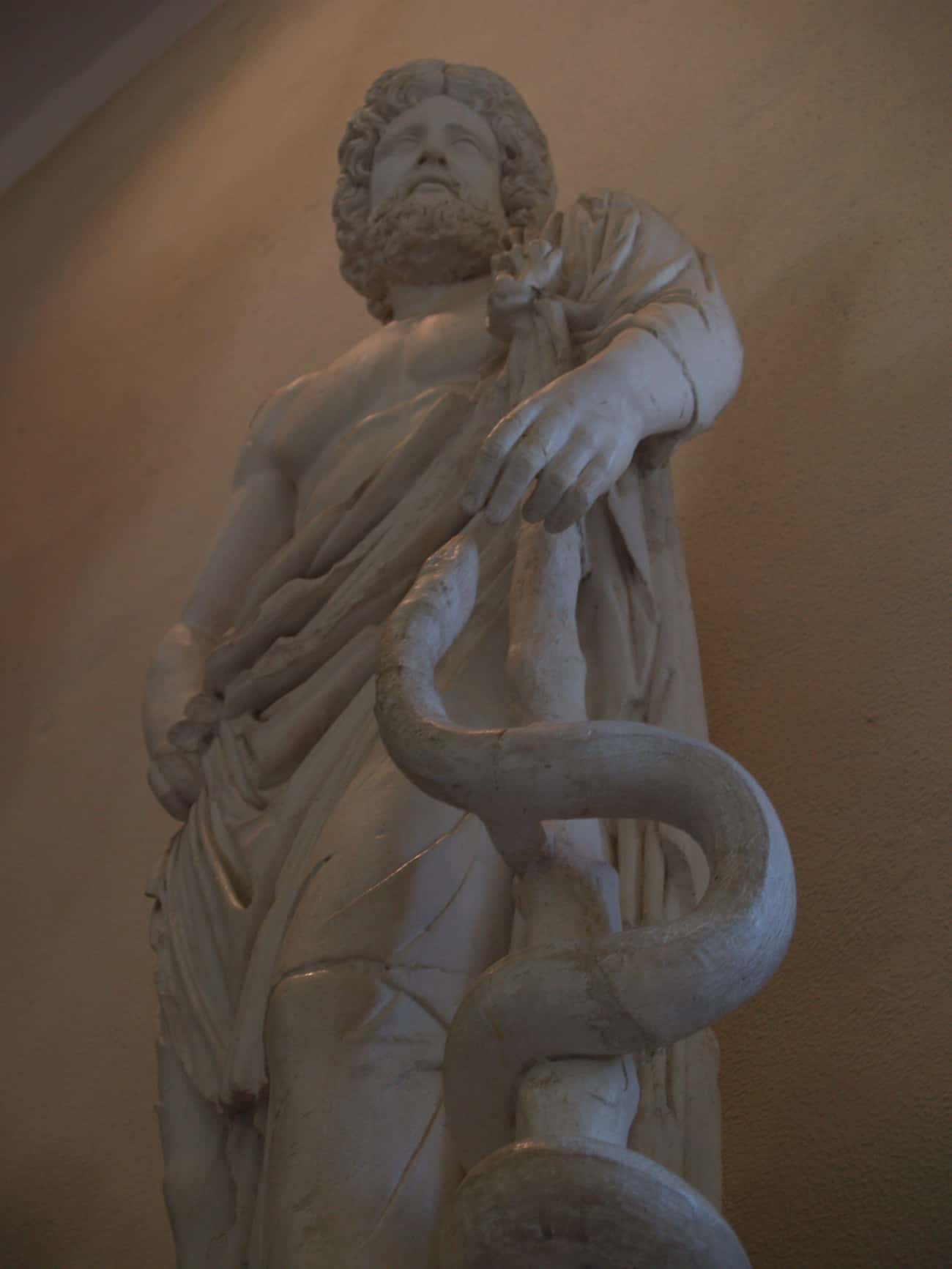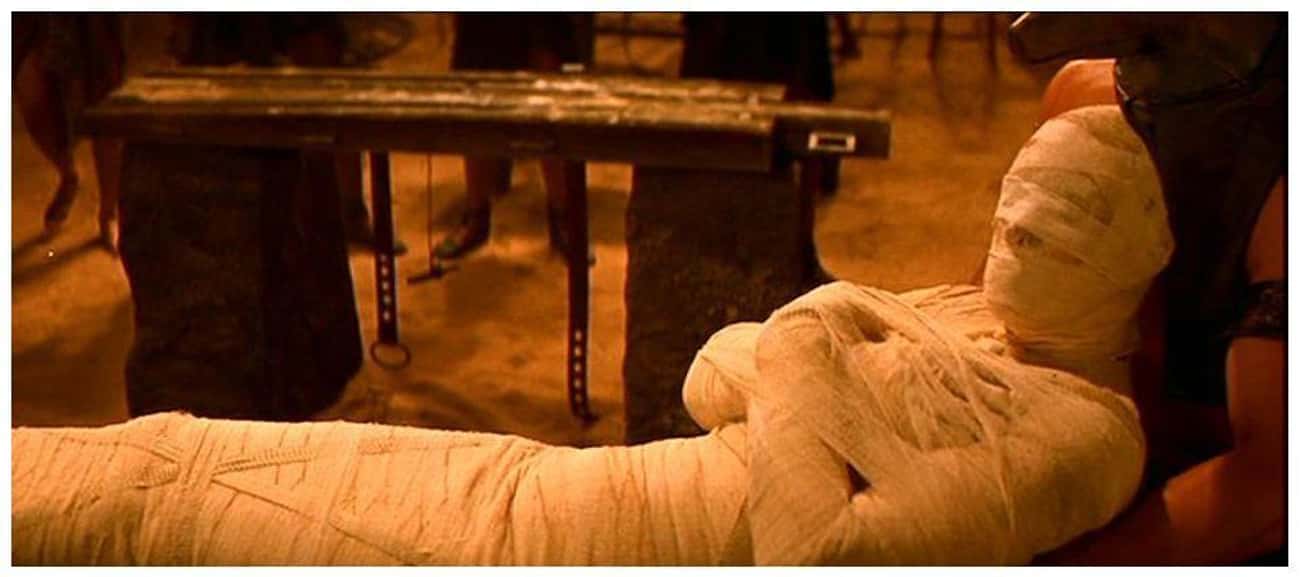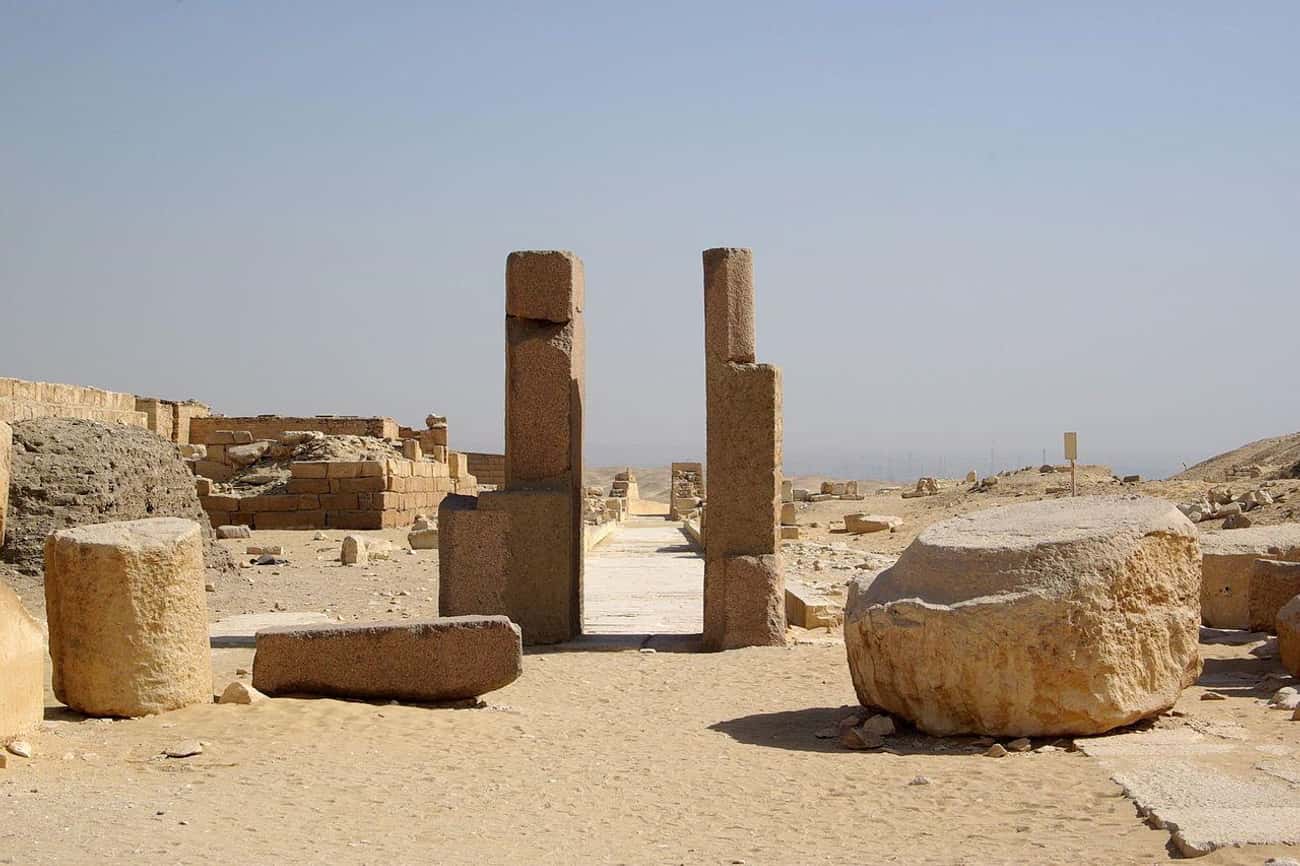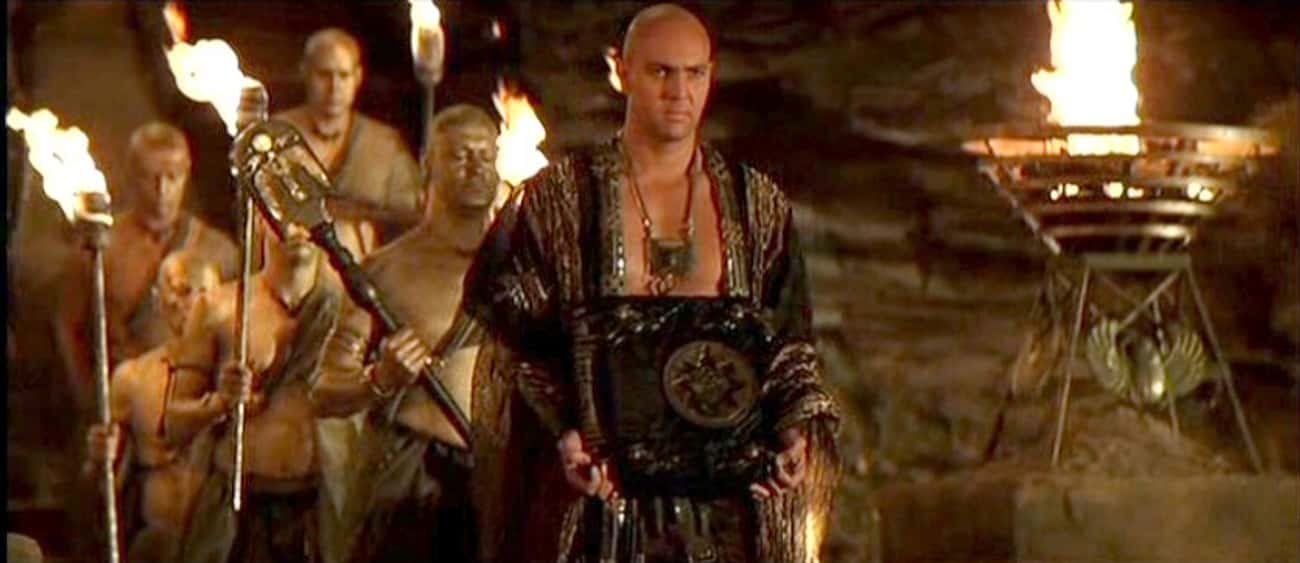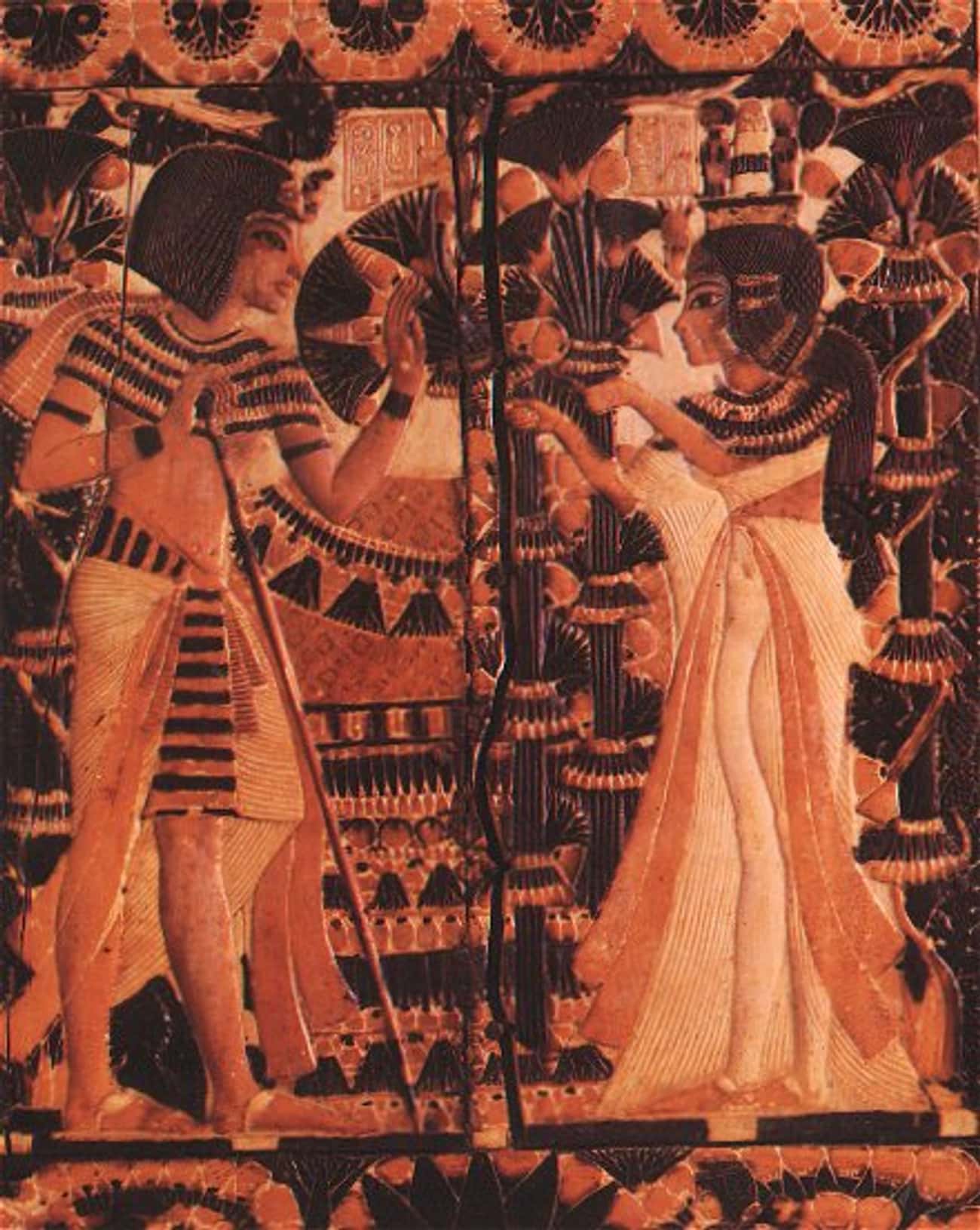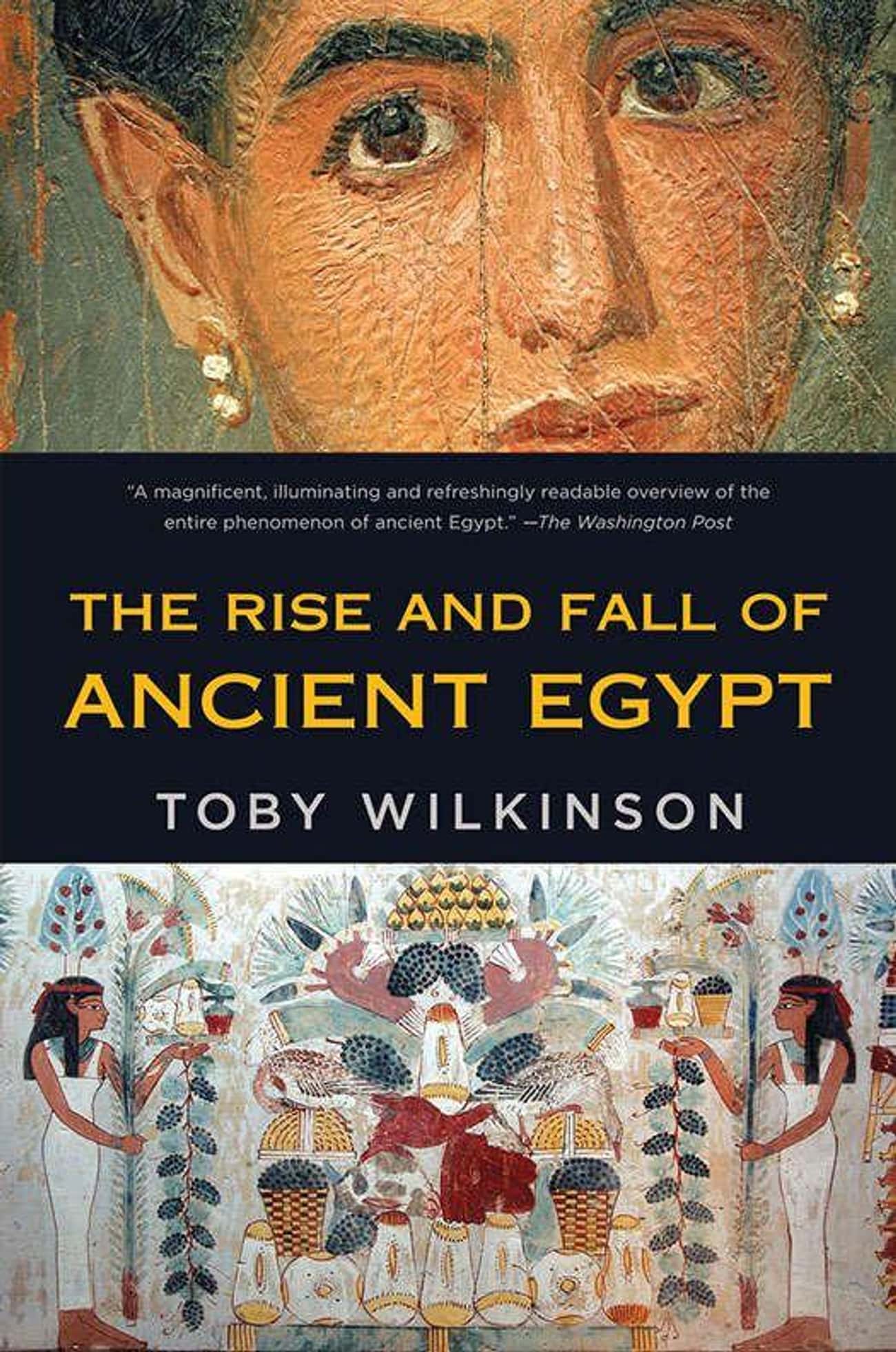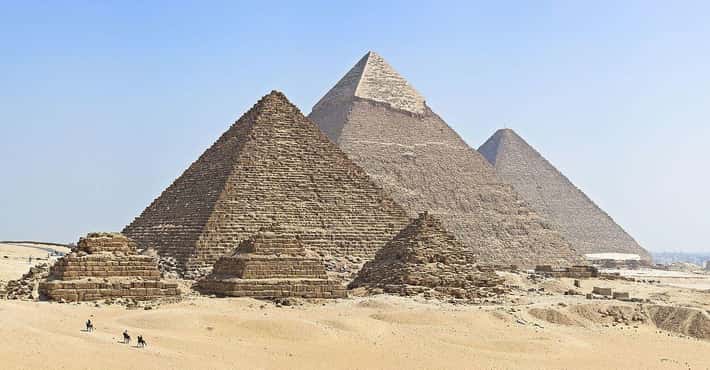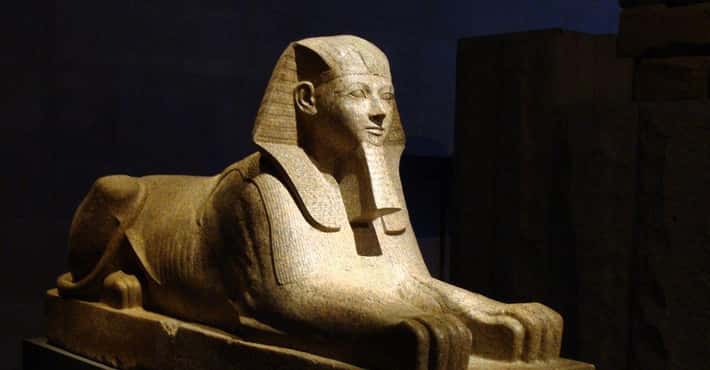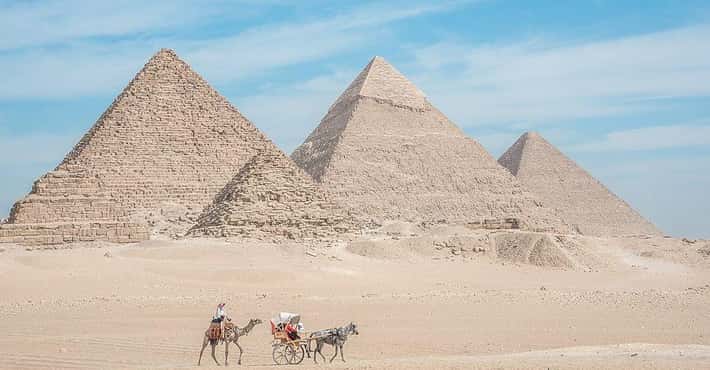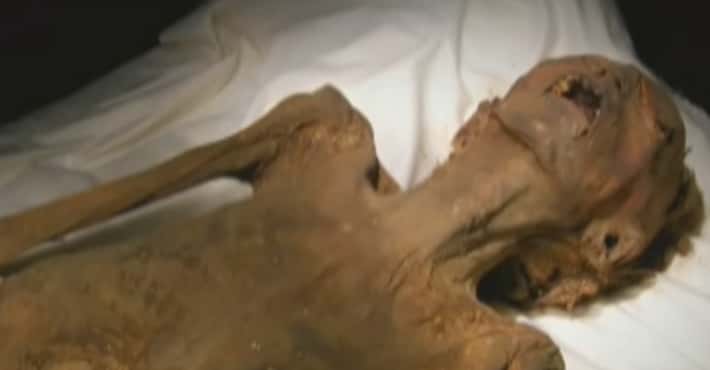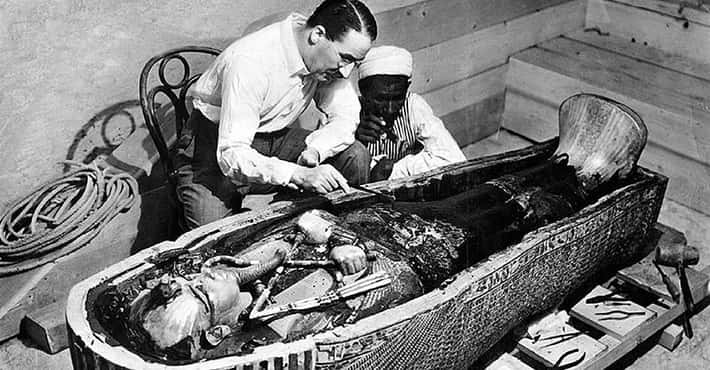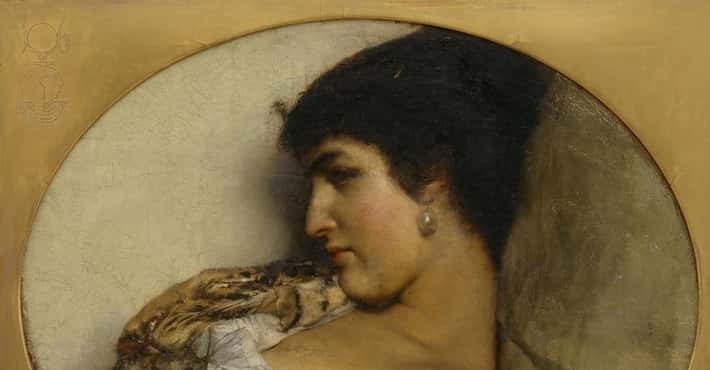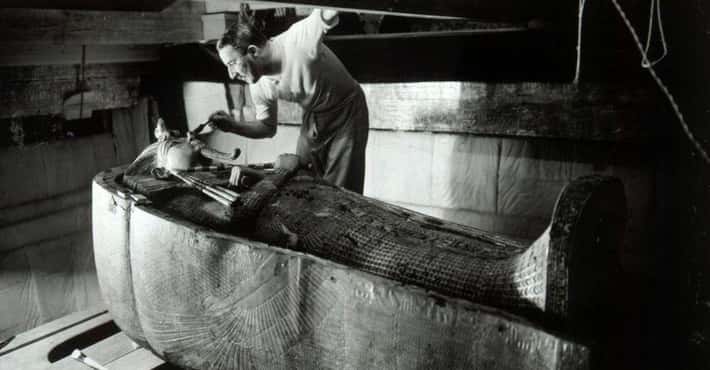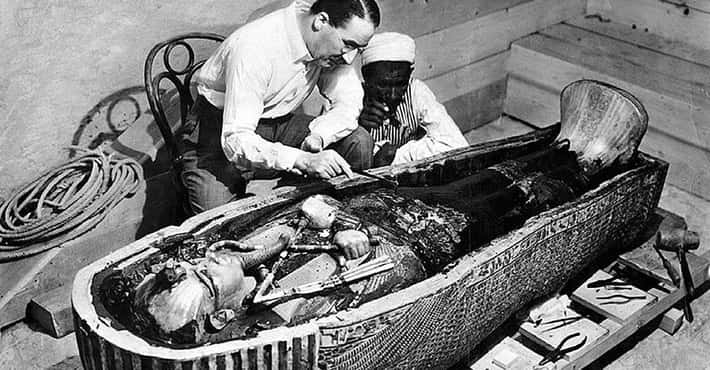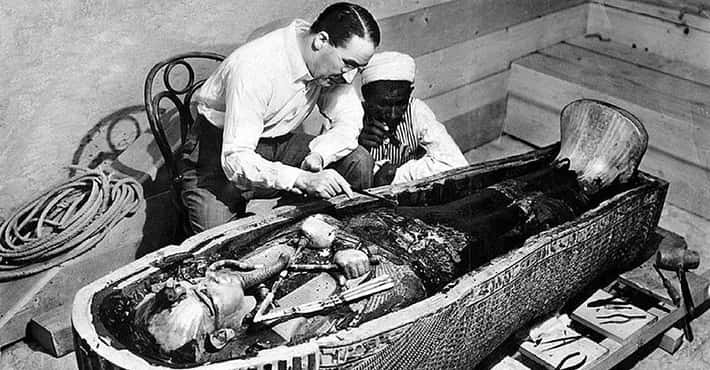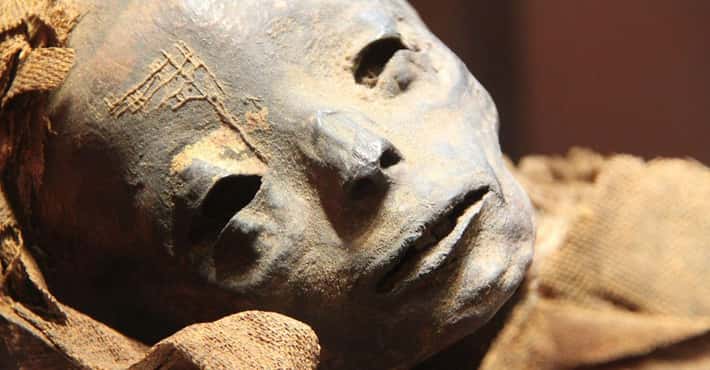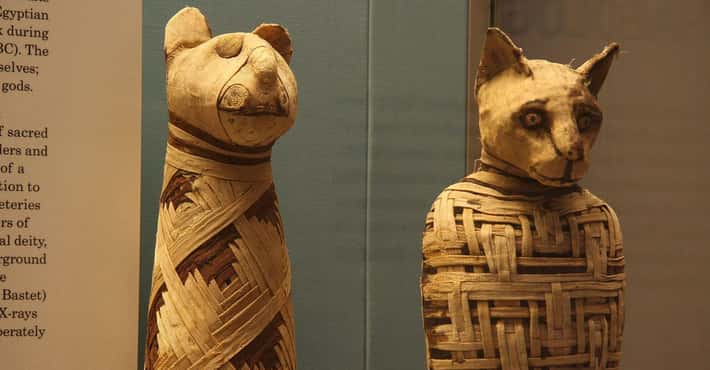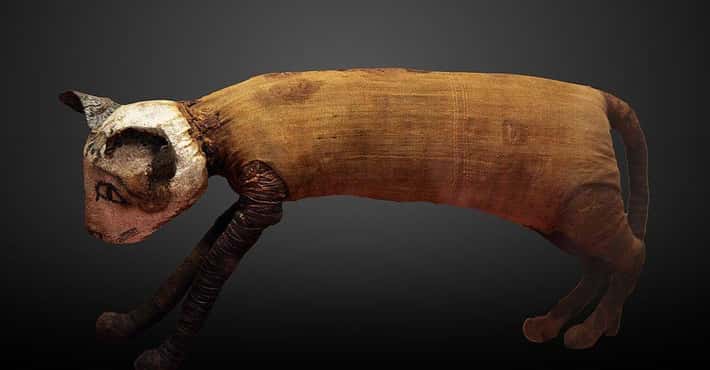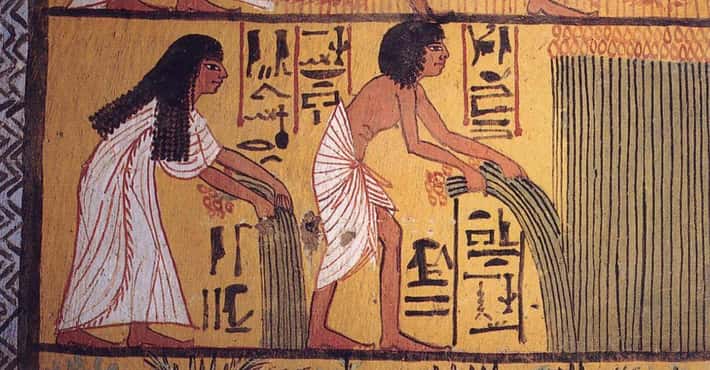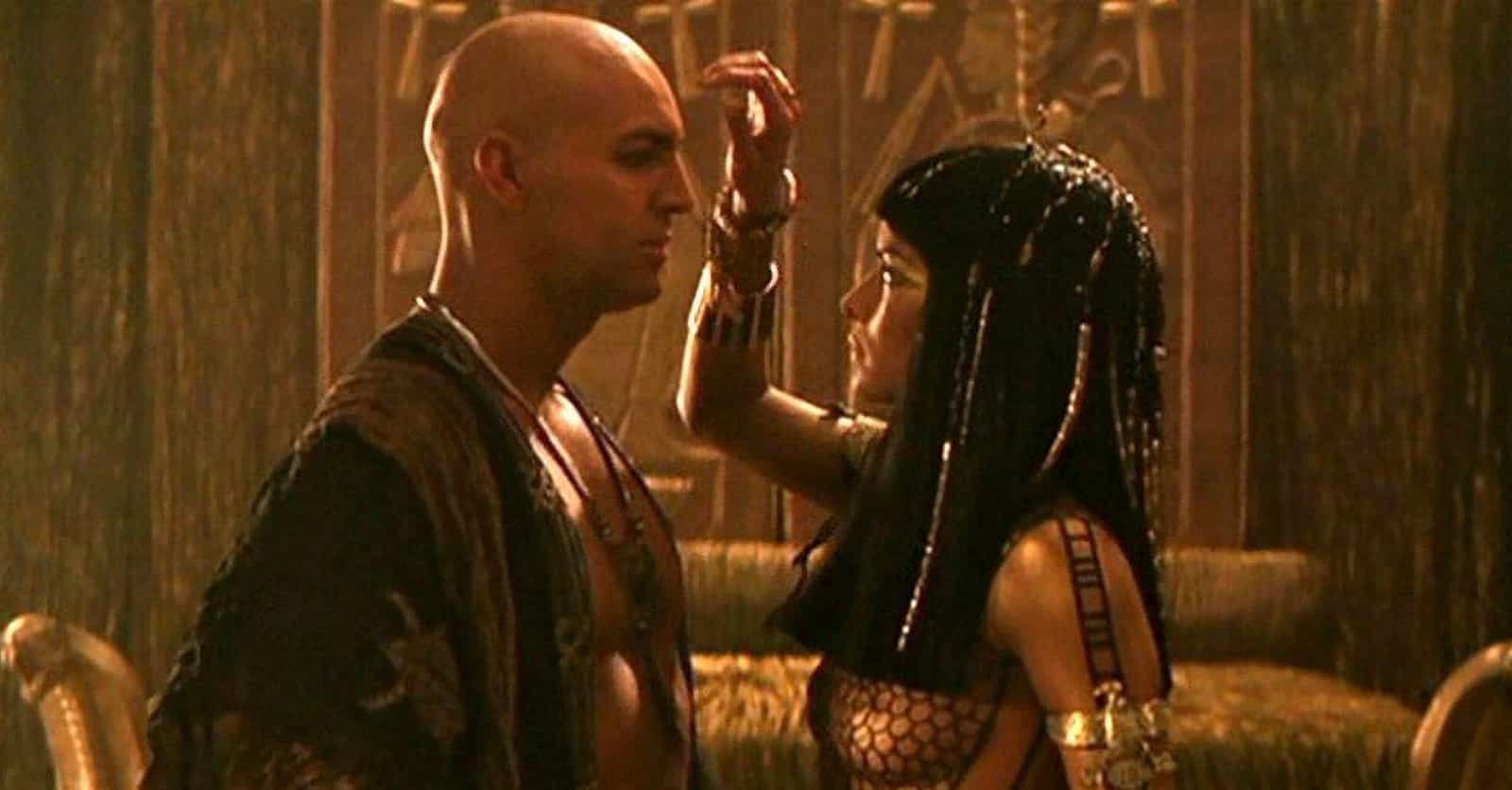
All About Imhotep, The Egyptian Polymath Who Is The Exact Opposite Of The Villain From 'The Mummy'
- Photo: Jorge Lascar / Wikimedia Commons / CC BY 2.0
He Engineered The First Pyramid
Imhotep became the High Priest of Ptah (the god of craftsmen) during the reign of King Djoser and was responsible for the construction of the king's burial place. Previous royal tombs had been simple rectangular structures, but Imhotep decided to create a brilliant final resting place for King Djoser.
Using a number of architectural innovations, Imhotep built the Step Pyramid of King Djoser, which was the tallest structure in the world at the time of its construction. The king was so pleased with Imhotep's work that he allowed the priest's name to be inscribed on the pyramid along with his own.
The Imhotep of The Mummy franchise isn't so much interested in building pyramids as he is in looting them for artifacts and exploiting their ancient supernatural qualities. In The Mummy Returns, Imhotep travels to the pyramid of the Scorpion King to face off against the ancient leader and gain command over the ghastly legions of Anubis.
- Photo: The Mummy/Universal
He Was A High Priest Of Ptah, God Of Craftsmen And Architects
Ptah was an important god in the ancient Egyptian pantheon. He was the god of craftsman and architects, roughly analogous with the Greek god Hephaestus or the Roman god Vulcan. However, Ptah was also the patron god of Memphis. When Memphis became the seat of government, Ptah's followers grew numerous and powerful.
Imhotep quickly worked his way through the ranks to become High Priest of Ptah, earning a place in the highest government councils. At that point, a priest's role was both religious and civil. Imhotep's priestly position gave him oversight of earthly matters, such as the construction of the first pyramid.
In the movies, Imhotep is still a High Priest, but his ambitions aren't limited to this world. After being entombed in a sarcophagus, he is awakened in the modern world and sets out to become a god himself, first by resurrecting his lost love and then by trying to defeat the Scorpion King.
- Photo: Ken Russell Salvador / Wikimedia Commons / CC BY 2.0
The Ancient Greeks Co-opted Him And Praised Him As Asclepius
Everyone gives the Romans a hard time for co-opting the Greek gods, but the Greeks weren't above a little appropriation themselves. Thoth, the Egyptian god of the moon, became identified with Hermes, while Imhotep himself was associated with Asclepius, the god of medicine.
Meanwhile, the evil Imhotep of The Mummy franchise is out here trying to become a different kind of god entirely. In the movies, Imhotep is identified constantly with Anubis, the jackal-headed god of embalming. In the climax of The Mummy Returns, Imhotep struggles for control of Anubis's jackal-headed troops that guard the Scorpion King's pyramid.
- Photo: The Mummy / Universal
He Was One Of Only Two Non-Royal Egyptians To Be Deified
The film version of Imhotep meets his end after plotting against the Pharaoh. He is buried alive in a sarcophagus under a statue of Anubis. In real life, Imhotep followed a different path to immortality. Almost two thousand years after his passing, around 525 BCE, he was deified by the Egyptian people and worshipped as the god of healing.
He is one of only two common Egyptians to be given this honor. Strangely enough, the other deified commoner, Amenhotep, was also a healer.
- Photo: Berthold Werner / Wikimedia Commons / CC BY 3.0
Worshippers Traveled To The Saqqara Necropolis, Where They Believed His Spirit Resided
After his deification, Imhotep was worshipped as a powerful god. His followers traveled from all over the empire to the Saqqara necropolis, his supposed final resting place. At Saqqara, worshippers would ask priests to let them stay overnight, as they believed the dreams they had there would give them guidance and help heal sick family members. Pilgrims also mummified ibises and "gave" them to Imhotep, since the bird was associated with wisdom.
In the movies, Imhotep isn't concerned with healing anyone except his lost love Anck Su Namun, and even that was more necromancy than medicine.
Some Believed He Was The Son Of A God
When Imhotep was deified, the priesthood needed to decide his place among the pantheon. Ancient Egyptian theology was focused on hierarchy, and certain gods were revered above others for a variety of metaphorical and symbolic reasons. Imhotep was considered the son of Ptah, the god of craftsmen. Together with Ptah and Sekhmet, the goddess of childbirth, Imhotep completed the great "triad of Memphis," a group of three gods associated with the powerful city.
Fans of The Mummy franchise know Imhotep wields some impressive magical powers. He can transform himself into sand, control scarabs, and summon plagues. He also has supernatural strength and agility. While the movie never claims he's the son of a god, it might explain how he obtained these supernatural abilities.
- Photo: Metropolitan Museum of Art / Wikimedia Commons / Public Domain
He Is Sometimes Called The 'First Physician'
Eminent Canadian physician Sir William Osler called Imhotep "the first figure of a physician to stand out clearly from the mists of antiquity." Imhotep was a prolific doctor and surgeon, treating over 200 patients in between fulfilling his political, religious, and civic duties. He treated everything from tuberculosis to gall stones, and may have even had a hand in founding the first known school of medicine.
In The Mummy, Imhotep is surgeon of sorts - in the sense that he wants to vivisect a human in order to provide a host body for his 3,000-year-old lover.
- Photo: The Mummy/Universal
He Wrote The World's First Medical Treatise
In 1862, a dealer named Edwin Smith bought ancient papyrus, not knowing what he was getting. The "Edwin Smith papers," as they came to be called, are a compendium of medical wisdom. The book covers all manner of cases, including tumors, fractures, and infections. Considering the time it was written (around the 27th century BCE), it is a mostly accurate and sophisticated medical book, and includes a fairly precise description of human anatomy. This document has been attributed by many to Imhotep.
Hollywood's version of Imhotep has an entirely different relationship to ancient scrolls. When someone accidentally reads from mystical Egyptian scripts, they reawaken Imhotep.
He Ended A Seven-Year Famine In Egypt
During the reign of King Djoser, Egypt was struck by a seven-year famine. The king asked Imhotep to find a solution. Historians say Imhotep consulted ancient books and instructed the Egyptians to pray to Khnum, which allegedly alleviated the famine. However, we also know Imhotep created an irrigation system that allowed the fields to receive water even when the river was low. While the prayers boosted the people's confidence, the irrigation system may have been the real solution.
The fictional Imhotep definitely has the power to end droughts, as well - it's just unlikely he would be so benevolent with his powers. In The Mummy Returns, he summons an enormous wall of water in order to wipe out his enemies. It's arguably as effective as irrigation channels, but a whole lot more impressive.
- Photo: Wikimedia Commons / Public Domain
In Real Life, He Never Met Anck Su Namun
Throughout both The Mummy and The Mummy Returns, Imhotep is motivated by his love for Anck Su Namun. The two of them conspire to take down the Pharaoh, but their plot ultimately unravels. His love for her is so strong that when she abandons him at a critical moment in the film, Imhotep willingly throws himself into a chasm of hungry souls who tear him apart.
The real-life Anck Su Namun lived in the 14th century BCE, a good thousand years after Imhotep's time. She was the wife of Tutankhamun and was reportedly devoted to the Pharaoh. When Tutankhamun abruptly passed at the age of 18 or 19, Anck Su Namun became Queen of Egypt and ruled until her handpicked successor took over.
- Photo: Random House
Want More Ancient Egypt?
One of the oldest and most mythologized cultures in human history, Ancient Egypt has attracted the curious and the adventurous for millennia. The land has long been revered as a place of knowledge, mystery, and unparalleled beauty - with archaeologists still uncovering its secrets to this day. If you want to delve deeper into Egypt's history, the following books, media, and other Ranker lists are highly recommended.
A great place to start is Toby Wilkinson's The Rise and Fall of Ancient Egypt, an enthralling one-volume work that draws upon the author's 40 years of archaeological expertise. The civilization is reviewed from its early beginnings to its ultimate fate as a vassal of the Roman Empire.
For those more interested in the mythology of the culture, The Complete Gods and Goddesses of Ancient Egypt is as thorough as its title promises.
When Women Ruled the World offers a unique perspective on Ancient Egyptian culture by examining the reigns of six female rulers, including Hatshepsut, Nefertiti, and Cleopatra.
If you’re in the mood for a documentary, Egypt: The Series is a great tour through the New Kingdom and its lavish monuments.
With more than 300 photographs, many of them in color, The Art of Ancient Egypt pays homage to 3,000 years of glorious architecture, tombs, wall paintings, amulets, papyri, and objects traced to multiple Egyptian dynasties.
For those looking to add some epic flair to their home, this five-panel wall art installation offers a glimpse of the pyramids as they appear today.
For further reading on Ancient Egypt, Ranker's editors have selected the following lists that dive into the truths and popular misconceptions about this fascinating culture:


